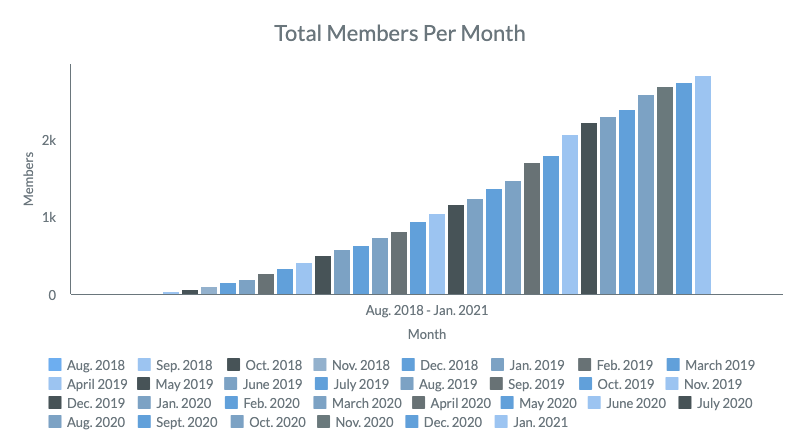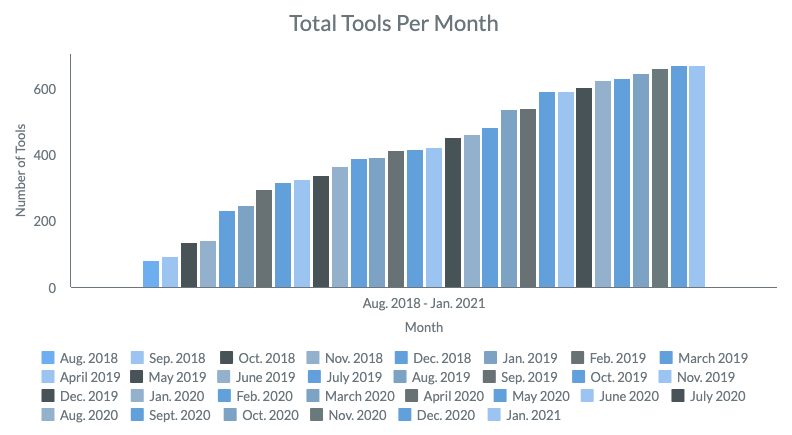|
A Word from HubICL Manager, Annette Benson Dear HubICL members,
In this edition of the newsletter, we are excited to share with you how faculty are both contributing to the HubICL Toolbox and adapting activities created by others for use in their virtual and in-person classrooms.
First, Dr. Dan Jones gives us an introduction to the original and adapted activities and assessments uploaded into the Toolbox by faculty taking part in the Intercultural Pedagogy Grant (IPG) program. Then we hear the background of the syllabi and other class materials contributed by Dr. Tatjana Babic Williams for the Italian program she oversees at Purdue University.
Please let us know what you think of these innovative materials by clicking the Review tab in the tool description.
Feeling inspired to share your own intercultural learning activities in the HubICL toolbox? Maybe you had a really stimulating conversation recently around global learning or about Equity, Diversity, and Inclusion, and would like to share the materials you used to get this going? All are welcome by clicking the “Create a tool” button, or contact the HubICL staff at cilmar@purdue.edu, and we are happy to help!
Happy Hubbing,
Annette Benson
Intercultural Pedagogy Grant Workshops Inspire New Content for the HubICLThe HubICL Hubbub’s October 2020 issue featured CILMAR Senior Intercultural Learning Specialist Dr. Daniel Jones and his work with this year’s adapted version of the Intercultural Pedagogy Grant (IPG) program, which provides monetary support and training for faculty/staff who are incorporating the virtual exchange programs that have temporarily replaced study abroad. This past semester, 32 IPG participants completed eight workshops on intercultural competence, backwards design, and creating/facilitating intercultural activities through virtual platforms.
One of the great successes of this year’s program so far, according to Jones, is that it’s on track to achieving a 100 percent completion rate.
“Every year there’s usually some attrition because study abroad programs get cancelled or the participants just get too busy,” Jones says, “But since all the programs are virtual—and we were able to offer some flexibility to participants in terms of when they’re able to finish—we’ve been able keep everyone on board.”
In addition to completing the workshops, IPG participants were also required to contribute a tool to the HubICL Toolbox. They could either create their own new, original virtual activity or assessment, or they could revise an existing tool for virtual contexts. Most participants who designed their own new tool from scratch developed something they would be able to use in the curriculum for their virtual exchange program.
This requirement generated another success: more content for the HubICL! Currently, 13 of the eventual 32 IPG tools are published and available in the Toolbox.
New/original tools include the following:
- AEM-Cube by Stewart F. Bauserman, Purdue Polytechnic Institute: An assessment tool developed through a collaboration between Human Insight and the Agile Strategy Lab at Purdue University and University of North Alabama. The assessment measures three key dimensions of adaptation: attachment, exploration, and managing complexity.
- Analyzing Cultural Attitudes by Dr. Katie Jarriel, Purdue University Honors College: This virtual/online activity enables participants to discover and assess linguistic patterns using digital textual analysis that indicate the cultural attitudes of characters in a piece of fiction.
- Foodways: Slurp by Dr. Jonathan, Ying, Krannert School of Management: In this activity, participants watch the YouTube video Slurp and learn the concept of foodways and how it is intertwined with culture.
- Photo Analysis: Women of Cover by Elizabeth Brite, Purdue Honors College: In this exercise, participants unpack assumptions about the common practice of veiling in Muslim culture and learn how their views of cultural others are shaped by history.
- Respectful Interactions and Picture A... by Dr. Laura Starr, Purdue College of Science: Respectful Interactions challenges participants to recognize how we sometimes use stereotypes when interacting with others, as well as learn how to convert stereotypes into generalizations. Picture A... helps participants recognize that cultures vary in their perceptions of particular professions.
- A Street Dog’s Life by William S. Smith II, Purdue College of Veterinary Science, Director of International Programs: This tool is based on the HubICL activity and TEDTalk of the same name, Danger of a Single Story. Participants watch the video #AStreetDog’sLife to analyze a “single story” about a specific group of people/culture and understand the ways in which narratives and stories can create stereotypes about people and places.
Adapted tools include:
- Cultural Artifact Activity (Virtual) by Dr. JoAnn Phillion, Purdue College of Education: This activity is a virtual version of Kristin Samarov’s Cultural Artifacts activity.
- Virtual adaptation of Cultural Question Jar by Virginia Cabrera, Assistant Director of Orientation Programs, Student Success Programs: In this virtual version, participants take turns “spinning” a wheel to generates questions about culture. Cabrera created both the original and adapted versions.
- Virtual Qualtrics version of the Global Engineering Competency Scale by Cara Putman, Krannert School of Management: This assessment measures self-efficacy, technical coordination, knowledge of professional ethics and standards, and knowledge of engineering cultures.
- Virtual version of Pair Sculpt and Group Sculpt by Dr. Andy Buchanen, Purdue Polytechnic Institute: The virtual version of this activity enables participants to reflect on their cultural assumptions about expression and emotion, interpret emotional expressions demonstrated in the body language of others, and compare narratives and narrative assumptions about body language expression and response.
- The Modified Personal Identity Wheel by Dr. John Sheffield, Purdue Polytechnic Institute: This adaptation prompts participants to list adjectives they would use to describe themselves after reflecting on their answers to six personal identity characteristics. It is best used as an icebreaker activity.
Search the IPGcreated tag to find all future IPG tools!
Tatjana Babic Williams Champions Intercultural Learning in Italian at Purdue
|

One crucial aspect of the Center for Intercultural Learning, Mentorship, Assessment and Research (CILMAR) at Purdue University’s mission is to facilitate intercultural learning opportunities across campus by mentoring faculty and staff to become intercultural leaders. Dr. Tatjana Babic Williams, Senior Lecturer and Director of Italian Studies at Purdue, is one of those leaders and advocates for intercultural learning at Purdue through her work in embedding intercultural competence into language learning.
Babic Williams is originally from Croatia, and Italian has always been a second language for her. She received her Bachelor of Arts in Foreign Languages and Literatures from the University of Trieste in Italy and then continued her graduate studies at Purdue where she received her MA and PhD in Comparative Literature with a focus in Italian Language Literature and Postcolonial Studies.
Currently, Babic Williams teaches all levels of Italian language, literature, and culture at Purdue. Additionally, in her role as Director of Italian Studies, she is in charge of the vision, development, outreach, and recruitment in the program.
Babic Williams began incorporating intercultural learning into her curriculum in 2017 when she was co-leading a study abroad program in Trieste with Dr. Annalisa Mosca, fellow Senior Lecturer and Coordinator of Italian Language Levels in Italian Studies at Purdue. They both participated in the Intercultural Pedagogy Grant workshops, and Babic Williams was hooked from there: “My life story is sort of conducive to becoming interested in intercultural learning,” she said, “But after the workshops I also found all this interesting literature and theoretical background for it.”
Although many people might believe that intercultural learning is intrinsic to foreign language learning, Babic Williams acknowledges that intercultural competence doesn’t happen automatically.
“Research is telling us that the most effective approach to developing intercultural competence is to teach it intentionally, to offer students the opportunity to practice it, and also the opportunity to critically reflect on it,” she said. “So, if you think about it, a foreign language classroom is sort of an ideal ‘lab’ for practicing intercultural competence.”
After the study abroad program, she received a 2018 CILMAR Seed Grant for envisioning the systematic integration of intercultural learning into all levels of Italian. In collaboration with specialists from CILMAR (Dr. Daniel Jones and Dr. Aletha Stahl), Babic Williams and the Italian team first started with the elementary levels and then moved into the advanced levels. This semester, the program is completing the process by integrating intercultural learning into the intermediate levels.
For Italian Studies at Purdue, Babic Williams and her colleagues have created what they call the Italian Curriculum for the 21st Century. They use the AAC&U Intercultural Knowledge and Competence VALUE Rubric to determine the goals, outcomes, and skills for each level of Italian. At the beginning level, they focus on openness and curiosity; the intermediate level, self-awareness and other-awareness; and empathy and verbal/non-verbal communication at the advanced level.
|
At each level, intercultural competence is incorporated through three basic components:
1. An introductory lab that addresses why intercultural competence is integral in a language course and how students can both professionally and personally benefit from growing their intercultural skills.
2. Three “labs” or experiential activities adapted from various intercultural competence resources that are integrated seamlessly into the curricular topics and structures important to the language.
3. A reflection activity. This component is especially important as, Babic Williams said, “Both John Dewey and Thiagi have taught us that we don’t learn from experience; we learn from reflecting on our experience.”
But why is intercultural learning so integral to language learning? Babic Williams provides three reasons. First, intercultural competence is one of the top 21st century transferrable skills that students will need both personally and professionally. It’s crucial for them to know how to build relationships with people who are culturally different from them, how to work in a multicultural or diverse environment, and how to be better global citizens.
Second, it provides opportunities for building tolerance towards ambiguity, as well as flexibility, and emotional resilience. “Once you start learning a new language, you’re out of control. You don’t know what’s going on. You may be 20, but you’re learning something at the level of a 5-year-old,” she said. “It’s a very uncomfortable situation. And I say that to my students at the beginning levels: ‘You’re all smart kids and you do fantastic things in your own language, but once you come here, you have to learn how to welcome that kind of ambiguity and all that it brings. And looking at that as an opportunity to grow and not as something that diminishes you as a person.’”
Finally, incorporating intercultural learning into the curriculum from the beginning level provides opportunities for students who may have limited time to spend in a world language classroom. According to Babic Williams, most students at Purdue only take Italian for two or three semesters, and a majority of Italian students also don’t study abroad. Therefore, it’s unrealistic to expect them to become fluent speakers with this limited exposure: “So we shifted our goals from trying to create a native speaker to growing what Byram has termed an intercultural speaker— a language learner who is both linguistically and culturally competent and who can shift perspectives and mediate between the cultures.”
Babic Williams has generously shared all of the materials that she uses, including her syllabi, PowerPoints, and recommended HubICL tools for Novice Italian I and Advanced Italian I in the HubICL Toolbox. Her recorded presentations on embedding intercultural competence into the language classroom can be found here and here in the HubICL Research Repository.
In addition, Dr. Annalisa Mosca (mentioned above) has submitted reviews of several HubICL tools pertaining to their use in the language classroom and during education abroad. The reviews can be found at:
|
New Toolbox ToolsLooking for something new you can use for intercultural learning with faculty, staff, and students? Then check out these original tools submitted to the HubICL Toolbox in December 2020.
|
Fence In or Fence Out
Selling Masculinity
Created by Dr. Kris Acheson-Clair
|
Fence In or Fence Out uses regional variation in what are called fence laws ("fence in" or "fence out") to get participants talking about how their own and other cultures think about land/space.
Selling Masculinity focuses on commercials created by two different companies—Gilette and Egard—and how those commercials use social responsibility to promote cultural values and beliefs surrounding masculinity.
|
Please upload your original or adapted tools here to have them included in the April 2021 issue of the HubICL Hubbub.
AnnouncementsHubICL Highlights Promoted on Facebook:
Looking for intercultural learning tools or assessments to use in a classroom or program? Or maybe some research on intercultural competence? CILMAR now offers HubICL Highlights each week on its Facebook page:
- Tuesday, tools from the Toolbox
- Wednesday, Collections
- Thursday, publications from the Research Repository
- Saturday, assessment resources
- Sunday, ideas for new tools
To see any or all of these highlights, please like and follow us at facebook.com/PurdueCILMAR!
Call for Papers on Virtual Exchange, COIL, and Distance Learning:
Have you been collecting data related to virtual exchange, COIL, distance learning, or another related topic? Are you looking for a home to publish your research project? Consider submitting to the HubICL Research Repository! Compile your data and writing into our white paper template and submit your document at https://hubicl.org/publications/submit. Our HubICL Team will then assist you with formatting and filling out the appropriate fields.
Upcoming HubICL Events:
Workshop: Reimagining Mentored Undergraduate Research in Global Contexts for Depth and Breadth. Kris Acheson-Clair, Maureen Vandermaas-Peeler, Dawn Michele Whitehead, facilitators. February 10-11, 8:45 AM-10:30 AM EST. WISE: Connect 2021, Virtual.
HubICL Tool Demo: Who Writes History? An Exercise in Perspective-Taking. Megha Anwer, Nathan Swanson, Anish Vanaik, presenters. February 17, 10:30 AM-12:00 PM EST. Purdue InterCultural Learning Community of Practice (PICLCoP), Virtual.
HubICL Growth

As of January 31, 2021, the HubICL has reached 2,841 members and 670 tools in the Toolbox! The HubICL membership spans 741 institutions of higher education, 213 private/nonprofit/government organizations, and 92 K-12 institutions. Additionally, 476 members are from 73 countries outside of the United States.
The HubICL was created by Purdue University's Center for Intercultural Learning, Mentorship, Assessment, and Research (CILMAR)
|
|



